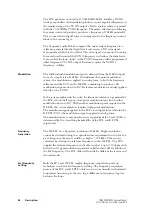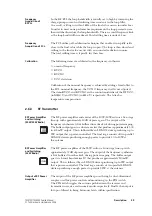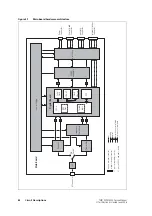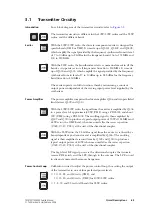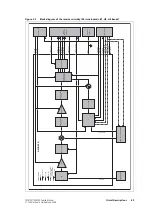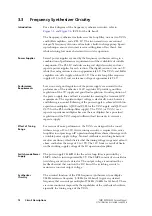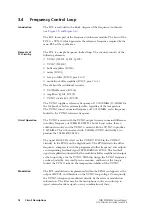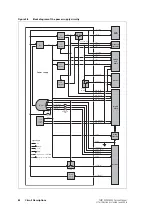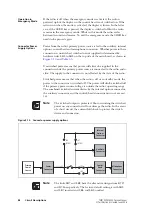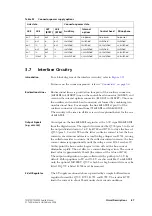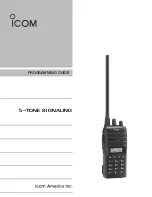
72
Circuit Descriptions
TM8100/TM8200 Service Manual
© Tait Electronics Limited
June 2006
3.3
Frequency Synthesizer Circuitry
Introduction
For a block diagram of the frequency synthesizer circuitry, refer to
The frequency synthesizer includes an active loop filter, one or two VCOs
and buffer amplifiers, and a PLL IC. The last-named uses conventional
integer-N frequency division and includes a built-in charge pump. Speed-
up techniques ensure a transmit-receive settling time of less than 4.5ms
while retaining low noise characteristics in static operation.
Power Supplies
Several power supplies are used by the frequency synthesizer owing to a
combination of performance requirements and the availability of suitable
components. The PLL IC includes analog and digital circuitry and uses
separate power supplies for each section. The digital section is run on 3V,
while the analog section is run on approximately 5V. The VCOs and buffer
amplifiers run off a supply of about 5.3V. The active loop filter requires a
supply of 14 to 15V, and a reference voltage of approximately 2.5V.
Performance
Requirements
Low noise and good regulation of the power supply are essential to the
performance of the synthesizer. A 6V regulator IC provides good line
regulation of the 9V supply and good load regulation. Good regulation of
the power-supply line and load is essential for meeting the transient ACP
requirements. The regulator output voltage is electrically noisy, however,
and filtering is essential. Filtering of the power supply is achieved with two
capacitance multipliers (Q508 and C585 for the VCO supply, and Q512 and
C579 for the PLL and loop-filter supply). The VCO (or VCOs) use a
separate capacitance multiplier because these multipliers have poor load
regulation and the VCOs impart sufficient load transients to warrant a
separate supply.
Effect of Tuning
Range
For reasons of noise performance, the VCOs are designed to be tuned
within a range of 2 to 12V. Active tuning circuitry is required. An active
loop filter incorporating an IC operational amplifier achieves this range with
a suitable power supply voltage. Normal synthesizer switching behaviour
involves overshoot, which dictates that the tuning voltage range must extend
above and below the range of 2 to 12V. The 14V limit is a result of limits
on the working supply voltage of the IC operational amplifier.
Switch-mode Power
Supply
The power supply
VCL
SUPPLY
for the active loop filter is provided by a
SMPS, which is in turn powered by 9V. The SMPS consists of an oscillator
(switching circuit) and a detector. The output voltage is monitored by a
feedback circuit that controls the DC bias of the switching circuit to
maintain a constant output voltage.
Synthesizer
Circuitry
The essential function of the PLL frequency synthesizer is to multiply a
25kHz reference frequency (30kHz for A4 band) to give any desired
frequency that is an integer multiple of 25kHz (30kHz for A4 band). There
are some constraints imposed by the capabilities of the synthesizer hardware,
especially the tuning range of the VCOs.
Summary of Contents for TM8235
Page 1: ...TM8100 mobiles TM8200 mobiles Service Manual MMA 00005 04 Issue 4 June 2006...
Page 10: ...10 TM8100 TM8200 Service Manual Tait Electronics Limited June 2006...
Page 62: ...62 Description TM8100 TM8200 Service Manual Tait Electronics Limited June 2006...
Page 148: ...148 Disassembly and Reassembly TM8100 TM8200 Service Manual Tait Electronics Limited June 2006...
Page 162: ...162 Servicing Procedures TM8100 TM8200 Service Manual Tait Electronics Limited June 2006...
Page 178: ...178 Interface Fault Finding TM8100 TM8200 Service Manual Tait Electronics Limited June 2006...
Page 258: ...258 Receiver Fault Finding TM8100 TM8200 Service Manual Tait Electronics Limited June 2006...
Page 446: ...446 Spare Parts TM8100 TM8200 Service Manual Tait Electronics Limited June 2006...

